It’s no secret that prescription medication costs can be exorbitant, even when you have a prescription drug plan (PDP). If you have to take one or more medications daily (as many seniors do), the price of those medications may have a significant impact on your monthly budget.
Wouldn’t it be nice if you could lower those costs without having to change insurance plans or stop taking your medications?
You may be able to. Here’s how.
Compare Prescription Drug Prices
Prescription drug plans reduce the cost of many medications, but the amount of that reduction depends on what “tier” the drugs fall into. If any of the medications you take fall into the higher tiers, you may be on the hook for paying 40% or even the entire price of the medication.
Whatever tier your medications fall into, you may be able to save considerable money by comparing drug costs for both generic and brand-name drugs at different local pharmacies and mail-away pharmacies. (Insurance companies often suggest you can get lower prices through their mail-away programs).
To compare prices, you can call or visit different pharmacies and ask them to give you a quote on the medications that have been prescribed for you. Be sure to ask for the prices with and without insurance. Check your PDP provider’s website for price search tools, too. Some, such as United Health, have price comparison tools that let you search for a medication by name and then show you what you’ll pay for the medication at different pharmacies in your area.
How much can you save?
It depends on the medication, but the amount can be significant.
For example, one prescription that both my husband and I take daily is identical. The dosage is the same, the number of pills in the bottle is the same, and both prescriptions are for the generic version of the medicine. We have the same insurance plan. But one prescription costs $45 more than the other. The reason? We have them filled at different local pharmacies.
Another example: I saved over $100 every month on an eye-drop prescription by switching from the generic version to the brand name. (Same pharmacy, same insurance.) That adds up to a savings of over $1200 a year!
The price variations for my family’s medications aren’t unusual, either. The Consumer Protection Office in the State of Michigan did a survey and found prices for the same prescription drug differed by as much as $500 between pharmacies.
So, if you haven’t shopped for the best prices on the medications you take, you might be spending more on prescription drugs than you need to.
Why Do Prices Vary?
Prices can vary considerably from one pharmacy to another in the United States because of the way drugs are sold to pharmacies and because of the contracts the prescription drug plans negotiate with pharmacies.
In general:
- Drug manufacturers sell their products to distributors.
- The distributors, in turn, sell the medicines to pharmacies.
- Price negotiations at the distributor and pharmacy levels affect how much the pharmacies pay (their wholesale acquisition cost) for the medications they sell. The more negotiating power each distributor and each pharmacy has, the lower the wholesale acquisition cost is to each pharmacy.)
- Medicare may also negotiate prices on some drugs
- The pharmacies then set their cash price for each drug by adding their markup. (The cash price is the price a consumer with no drug insurance pays.) Typically, their markup makes the cash price 20 percent higher than the pharmacy’s wholesale cost.
- In addition, pharmacies generally add a flat fee for dispensing the medication (filling the individual prescription).
- If you have a prescription drug plan, the percentage of that cash price you ultimately pay will be determined by your insurance plan and the rates they negotiate with the pharmacies.
- Since each prescription drug plan negotiates its own rates with each pharmacy, the price of the same medication can vary depending on who your insurer is and which pharmacy you get your medications from.
Depending on your insurance plan, copays and co-insurance can effect what you pay for medications, too.
Related reading: How Medicare Works
Generic Vs Brand Name Drugs
According to the U.S. Food and Drug Administration (FDA), a generic medicine is a medication that works in the same way and provides the same clinical benefit as the brand-name medicine. A generic drug usually isn’t available until after the patent runs out on the brand name.
The active ingredients in generic and brand-name medicines are the same, but other things, such as colors and flavorings, that don’t affect the performance, safety, or effectiveness of the generic medicine, may be different.
Cost of Generic Drugs
Generic drugs may cost 80% to 85% less than their comparable brand names. Generic drugs often cost less to buy, the FDA says, because the manufacturers do not have to repeat the animal and clinical (human) studies that were done by brand-name medicines to demonstrate safety and effectiveness.
But as my example above indicates, the generic isn’t always cheaper. Contracts that Medicare or individual Insurance companies negotiate with a brand name manufacturer may cause the consumer price for certain drugs to be lower than the generic price.
So. before filling a high-priced medication, compare the price of the generic and brand name medication at your regular pharmacies, other nearby pharmacies, and mail-away pharmacies.
Other Ways to Reduce Medication Costs
If you don’t succeed with lowering your medication costs with any of the tips above, here are some other options to look into:
Ask Your Doctor about Alternative Medications
If you’re enrolled in a Medicare Part D drug prescription plan, once a year compare your plan benefits and costs to others available to you. If you want to switch plans for the following year, you can do so from October 15 to December 7.
Another possible way to save money is to ask your doctor if there’s an alternative you could take instead of a high-priced prescription. Or, if the medication isn’t covered at all by your insurance, ask your doctor to file a formulary exception with your insurer. If that’s turned down, as a last resort, you could file an appeal with the insurance company.
Ask About Help for Veterans
If you are a veteran, check with the Veteran’s Administration to see if you are entitled to VA healthcare benefits. If you qualify, these benefits can be significant.
Request a 90-Day Supply
If you take a medication regularly and are refilling it monthly, ask your pharmacy if it would be less expensive if you got a 90-day supply. If so, ask your physician to prescribe 90 days’ worth at a time.
Look for Manufacturers’ Discounts
Manufacturers of some costly brand-name drugs have programs to help patients who don’t have insurance pay for their medications. Check the website of the brand name drug manufacturer to see if they have any such programs and if you qualify.
Use Drug Coupon and Cards
If you don’t have prescription drug insurance or the price with your insurance is too high, you may be able to save some money on medications by using free discount drug coupons available at online sites and through or possibly through your state health department.
Keep in mind that these discount cards are used instead of your PDP to purchase medications. Your purchases may not help you meet your PDP plan deductible.Furthermore, the discount cards are not insurance. Seniors should still maintain their Medicare Part D plan. Similarly, consumers who are not seniors should be wise to maintain their prescription drug plan.
Online coupon sites let you enter a drug name and your location and show you the price for the drug at various pharmacies in your area. You can select the lowest price and get a coupon to take to that pharmacy to purchase your prescription.
Here are three of the sites that offer drug coupons: SingleCare, GoodRX, WellRX
Compare Prices at Online and Mail-In Pharmacies
You may be able to reduce what you spend on prescription drugs by using a mail-away pharmacy or an online pharmacy. In fact, your PDP plan may suggest a mai-away option for you. But while there are legitimate online pharmacies that may save you money, there are also online pharmacies that aren’t safe to use. Some sell prescription drugs at deeply discounted prices, often without requiring a prescription. These internet-based pharmacies often sell unapproved, counterfeit, or otherwise unsafe medicines outside the safeguards followed by licensed pharmacies.
How to Spot Fake Pharmacies
The FDA recommends consumers be wary of online pharmacies that:
- Do not require a doctor’s prescription.
- Are not licensed in the U.S. and by your state board of pharmacy.
- Do not have a licensed pharmacist on staff to answer your questions.
- Send medicine that looks different than what you receive at your usual pharmacy, or arrives in packaging that is broken, damaged, in a foreign language, has no expiration date, or is expired.
- Offer deep discounts or prices that seem too good to be true.
- Charge you for products you never ordered or received.
- Do not provide clear written protections of your personal and financial information.
- Sell your information to other websites.
Signs of Safe Online Pharmacies
According to the FDA, safe pharmacies:
- Always require a doctor’s prescription.
- Provide a physical address and telephone number in the U.S.
- Have a licensed pharmacist on staff to answer your questions.
- Are licensed with a state board of pharmacy.
You can also help ensure you are using a safe and legal online pharmacy by checking the pharmacy’s license in the state’s board of pharmacy license database by using the location tool on the FDA’s BeSafeRx website. If your online pharmacy is not listed, don’t use that pharmacy.
Don’t Skip or Stop Medications
Don’t try to save on medication costs by skipping doses or stopping the medication. Doing so could worsen your health or the condition you are being treated for.
In Summary
Searching for the best prices on medications you need can be time-consuming, but the savings you can realize could be significant.
Disclaimer: The information on this website is provided for informational purposes only and should not be considered as legal, tax, accounting, or medical advice. Please consult a licensed professional for help with any specific questions and issues you may have.

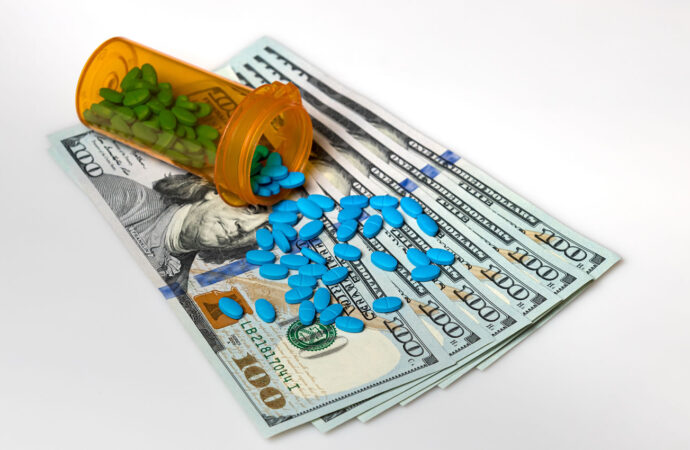

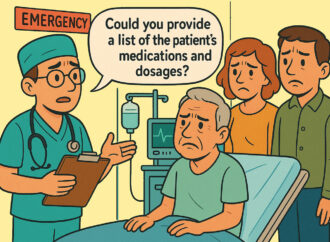



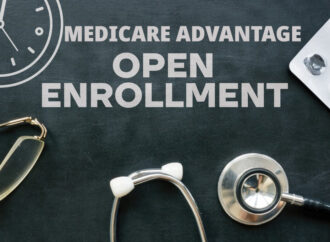
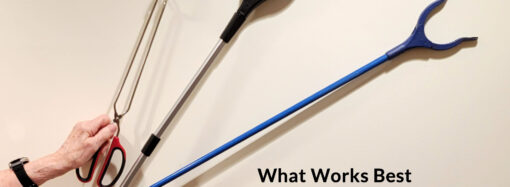

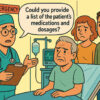



Leave a Comment
Your email address will not be published. Required fields are marked with *